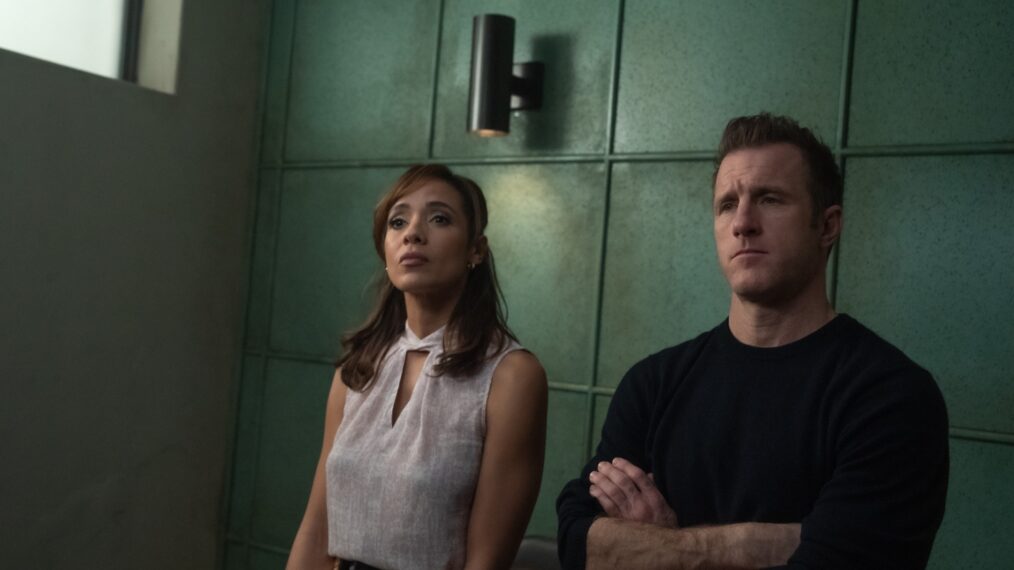The heart of Baltimore was rocked in the early hours of the morning when the Francis Scott Key Bridge, a vital link in the city’s infrastructure, succumbed to a devastating collision with the Singapore-flagged cargo ship Dali, causing it to collapse. The aftermath was nothing short of chaos as a section of the bridge plunged into the frigid waters of the Patapsco River below, trapping vehicles and construction workers alike in its wreckage.
Amidst the chaos, emergency responders launched a massive search and rescue operation, battling against time and icy temperatures to retrieve survivors. Moreover, the toll of the tragedy became painfully apparent as reports emerged of six missing construction workers and the recovery of one body from the water. Meanwhile, authorities confirmed they saved two others. The race against time intensified as the cold waters posed a threat of hypothermia to those stranded in the river.
Read More: Angel Reese Returns To Baltimore In Hometown Sellout
A Collision Course
The events leading up to the collapse began with a distress call from the crew of the Dali, citing a power issue just moments before the fatal collision. The cargo ship, operated by the renowned shipping company Maersk, found itself on a collision course with the Francis Scott Key Bridge, unable to avert disaster in time. The impact was swift and merciless, with the bridge crumbling into the river in a matter of seconds, leaving behind a scene of devastation and despair.
Past Incidents Cast Shadows
As the investigation unfolds, attention has turned to the history of the Dali and its previous encounters with maritime mishaps. In 2016, the vessel collided with a shipping dock in Belgium, with errors attributed to the ship’s leadership. While it’s too early to pinpoint the exact cause of Tuesday’s tragedy, the specter of past incidents looms large and raises questions about the vessel’s safety protocols and oversight.
Read More: Rapper Young Moose Wins $300K Settlement For Suing Cop From HBO’s “We Own This City”
Infrastructure Under Scrutiny
BALTIMORE, MARYLAND – MARCH 26: In an aerial view, the cargo ship Dali sits in the water after running into and collapsing the Francis Scott Key Bridge on March 26, 2024 in Baltimore, Maryland. According to reports, rescuers are still searching for multiple people, while two survivors have been pulled from the Patapsco River. A work crew was fixing potholes on the bridge, which is used by roughly 30,000 people each day, when the ship struck at around 1:30am on Tuesday morning. The accident has temporarily closed the Port of Baltimore, one of the largest and busiest on the East Coast of the U.S. (Photo by Tasos Katopodis/Getty Images)
The collapse of the Francis Scott Key Bridge has sparked concerns about the state of Baltimore’s infrastructure. While the most recent inspection report from 2021 deemed the bridge to be in overall fair condition, authorities noted areas of concern regarding bank protection and minor structural deterioration. As authorities delve into the circumstances surrounding the collapse, calls for more stringent inspection protocols and maintenance regimes have grown louder, underscoring the importance of proactive measures in averting future disasters.
Response & Recovery
In the wake of the tragedy, both state and local authorities have mobilized resources and declared a state of emergency to facilitate swift response efforts. The National Transportation Safety Board has taken the helm of the investigation, aiming to unravel the series of events that led to the bridge’s collapse and implement measures to prevent similar incidents in the future. Meanwhile, the community of Baltimore rallies together in solidarity, offering support to the families of the missing workers and those affected by the catastrophe.
In an address in North Carolina, President Joe Biden offered his condolences and declared that the federal government would help rebuild the bridge. “We’re gonna work with our partners in Congress to make sure the state gets the support it needs,” he said. “It’s my intention that the federal government will pay for the entire cost of reconstructing that bridge and I expect the Congress to support my effort.”
[Via]






































































































